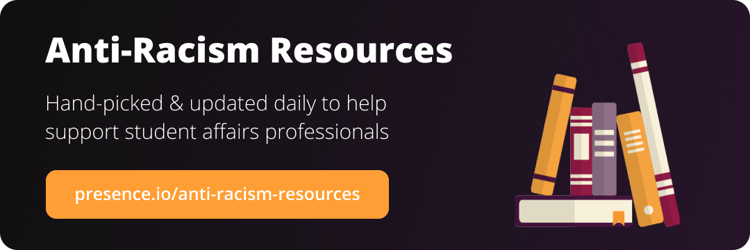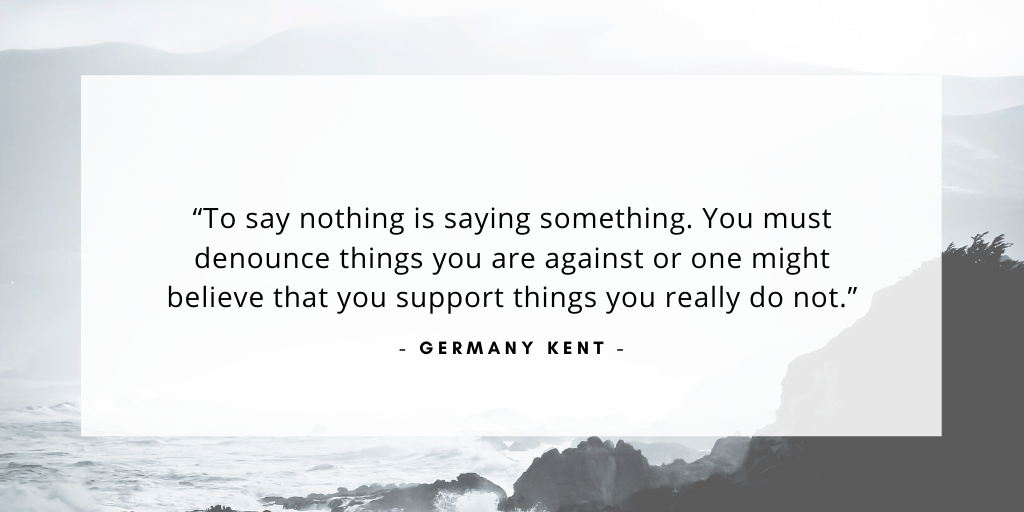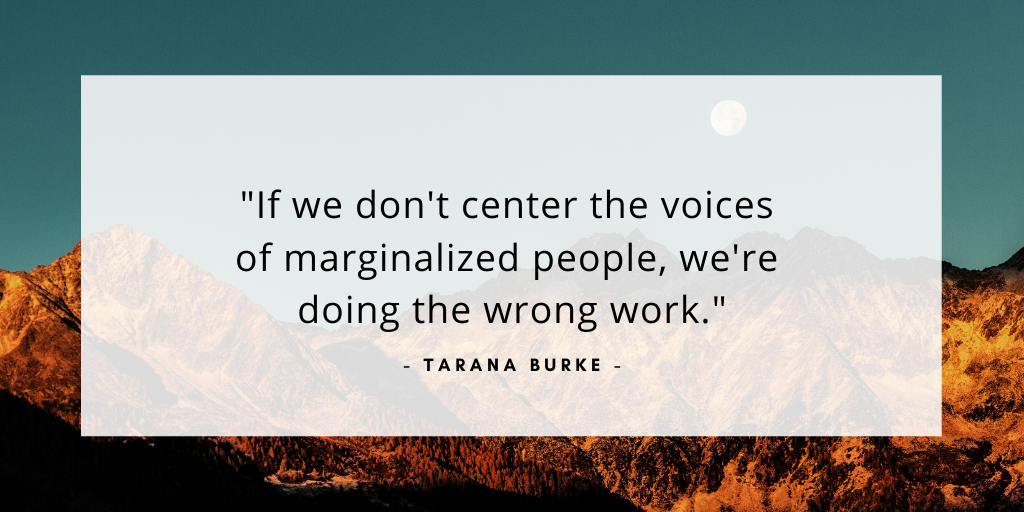The abrupt loss of in-person activities due to stay-at-home orders has been a blow to many students, staff, and faculty members who thrive in the affirming campus environment that institutions of higher education try to cultivate.
As student affairs professionals, we build community on our campuses and support students and colleagues through challenges. But although our office hours have become video calls and events are now streamed over social media, our commitment to fostering inclusive communities should remain as strong as ever.

Unfortunately, working and learning from home has made this commitment more challenging to uphold and has presented additional obstacles to many of our students and colleagues.
Some LQBTQIA+ students are returning to unsupportive homes, where they are unable to express their authentic selves. Plus, Asian-Americans are facing an increase in hostility both online and in person.
So, how can we create safe spaces and stand up for members of our community when we are physically distant? Here are six actions that you can take to be an ally in a virtual environment.
1. Understand what allyship is

As you read these tips about virtual allyship, keep these principles in mind:
- Allyship is not an identity. While it is a nice gesture to call yourself as an ally in your Twitter bio, allyship is about action; it’s not about putting on a performance.People will know that you are an ally based on your actions, not merely because you claim to be one.Are you engaging people in dialog about social justice issues on social media? Are you bringing up issues about equity — in person or on video calls — as your institution charts a course for virtual activities and social distancing restrictions?Allies use their seats at the table to empower people who are marginalized.
- Anyone can practice allyship. Everyone can be an agent and a target for different biases, based on their intersecting identities. Take some time to explore your social identities and acknowledge the privileges that you hold. Understanding your privileges can help you recognize when it’s time to take action as an ally. Writer Sian Ferguson phrases it this way:
“As a queer person, I should not be expected to educate every person who perpetuates heterosexism – intentionally or not. [And] as a white person, I could do more to engage with other white people when their behavior or attitude perpetuates racism.”
- You will make mistakes, and that’s okay. Practicing allyship requires humility, not perfection. You will inevitably say or do something that is unintentionally hurtful to the community that you are in solidarity with. Maybe you displayed a white savior complex while talking about racism or “mansplained” something when talking about gender equity.Either way, impact matters more than intent, so be prepared to sincerely apologize and ask how you could do better in the future.
2. Educate yourself
Before engaging in allyship, educate yourself on the topics that you will encounter. On social media, video calls, and other online communication, it is harder to have honest conversations about complex ideas than it would be in person. It is extra important to be clear and concise in virtual environments.
Also keep in mind that it is harder to read emotions through digital platforms, including video calls and email exchanges. Rapport-building is essential for fostering dialog about social justice issues, which is harder to do if you can’t read others’ emotions as easily. So, be empathetic and seek to clarify any misunderstandings that arise. Part of your self-education should be to understand the different perspectives of those whom you share a privileged identity with.
Do not put the onus on marginalized folx to educate you about their oppression. Instead, do your own research. The Social Justice Toolkits compiled by Drake University and the Social Justice 101 Resources created by Joseph Oteng are great places to start.
3. Speak up
While it is easy to remain silent on conference calls and ignore social media comments, student affairs professionals should not let potential allyship opportunities slip away.

For example, say that you come across a social media post about All Lives Matter. Rather than ignoring it, engage in a dialog with the person about why the All Live Matter countermovement is problematic. You could even add in a link to a thought-provoking article about the topic.
Another great resource is the White Nonsense Roundup, which was organized by white people to meet the challenge of racism on social media head-on. Check out their website to learn more about anti-racism and how white people can get involved in their mission.
But what about instances of microaggression and unconscious bias that occur against a colleague during a live video call? For example, imagine that a female colleague is interrupted by a man on the call or someone uses ableist language during the conversation.
It is best to address the issue immediately and interrupt the cycle of oppression. An appropriate intervention could be as simple as saying “Mekia had some good points and I would like to hear the rest of her thoughts” or “when you say ‘this program would cripple the budget,’ do you actually mean that it would be disastrous for the budget?” It is important to speak up because it can help students and colleagues reflect on their unconscious biases.
4. Create safe spaces
If we can’t create safe spaces for students and colleagues in our physical offices and programming spaces, we need to create these spaces virtually. In this time of social distancing, the need for social connection is greater than ever. Fortunately, video conferencing platforms like Zoom have made it easier for people to connect.
Working with campus partners, you can hold video meetings for affinity groups — to give people space to reconnect and discuss what’s on their minds. This could take the form of drop-in meetings through which students and staff can pop in to find support. Or it could be something more formal wherein affinity groups get together to have a trivia night, play a Pictionary game with Zoom’s whiteboard feature, or watch Netflix.
In addition to creating space for healing and connection, allies must actively engage in dialog about social justice issues with people who share their privileged identities. Constantly asking marginalized folx constantly to go through the emotional labor of educating privileged folx can lead to burnout.
In your groups, you could read and discuss books or articles about social justice issues, or watch and discuss videos in the style of a TED Circle. When deciding what format to use, consider how much pre-meeting preparation time you think that the participants need.
Each book club or TED Circle meeting should end with participants identifying a concrete action that they can take to serve as better allies. Allies become more effective and motivated when they are surrounded by people who are equally dedicated to eradicating oppression. Effective allies also hold each other accountable by calling each other in when they mess up.
5. Share resources
The offices that provide support services to our institutions may be struggling under the strain of increased demands, coupled with reduced capacities to respond remotely. So, take advantage of the many new resources that have been created to support people with marginalized identities by compiling resources that folx may find useful.
When examining resources, vet them by investigating the creators. If their content matches their mission statement or stated goals with regards to justice and inclusion, their content would be good to keep in your repertoire.
Here are some examples of resources to highlight on your office’s website, in newsletters, and on social media:
- Talking or healing circles that are being hosted by your institution or by advocacy organizations
- National hotlines that focus on the needs of marginalized folx, such as The Trevor Project and these other great hotlines
- Directories of mental health resources that are sensitive to the experiences of marginalized folx, such as these examples for people of color, LGBTQIA+ individuals, and Muslims
- Apps that are created with marginalized folx in mind, such as the meditation app Liberate or these great apps created by women of color
6. Amplify marginalized voices
As an ally, listening is just as important as taking action. Rather than dominating the conversation, true leadership as an ally involves amplifying the voices of marginalized folx.
One way to do so online is to reshare social media posts by marginalized activists rather than writing content of your own.
The purpose of this is to center their stories. When a privileged person writes about an issue that they are insulated from because of their privilege, they take control of the narrative, once again asserting power over the marginalized group. When deciding whether to publish your own content about a social justice issue or to reshare someone else’s content, do some searching to find out if members of the marginalized group have already written about that topic.
You can use the search functionality on social media to find terms related to the topic. If a hashtag is associated with a movement or issue, try using that. If someone has already contributed content, make the conscious choice to center that person’s voice instead of “taking up space” in the online conversation.
When you do choose to post about a social justice issue on social media, it is appropriate to engage with people in which you have a shared privileged identity. You can certainly share resources that have been created by marginalized groups to enrich the dialog, but you must be the one to start and sustain the conversation.
Another way that allies can support their campus communities is by helping their students and colleagues articulate the needs of their specific group and bring it to the attention of administrators. This could be a formal survey or even an informal email to students you know well.

As student affairs professionals, we work with students closely and have a ground-level view for understanding their struggles. From an enrollment management standpoint, a failure to address the needs of marginalized groups will undermine your institution’s retention efforts.
Allyship is a messy journey that’s been further complicated by our reduced ability to support each other in person. But it is needed now more than ever. Hopefully, this journey will ultimately take you from being an ally to being an accomplice. Check out the website White Accomplices to explore what the step after allyship entails.

How are you striving towards digital allyship? We’d love to hear your stories. Connect with us @themoderncampus and @JustinTerlisner.





